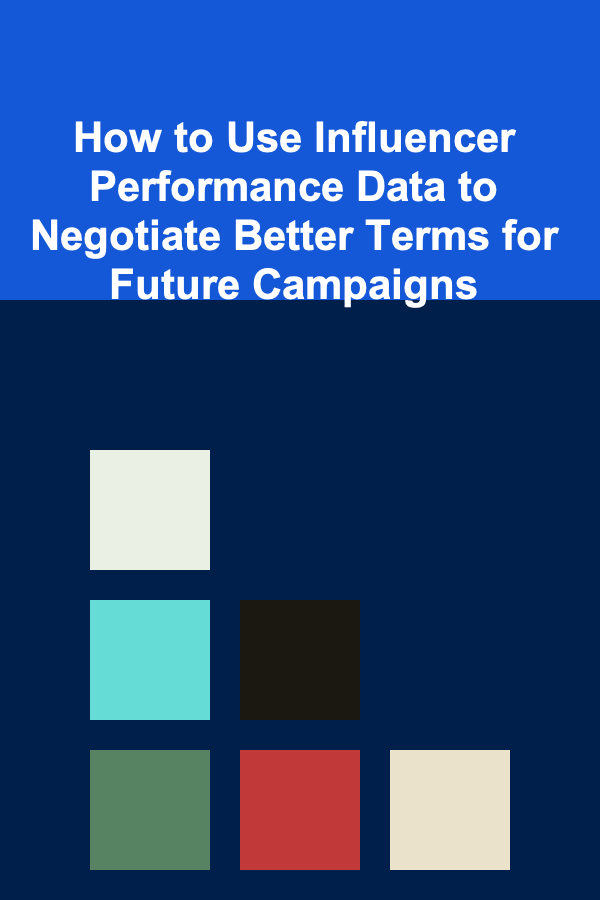
Building a Subscription-Based Business with Deep Learning
ebook include PDF & Audio bundle (Micro Guide)
$12.99$11.99
Limited Time Offer! Order within the next:

In recent years, deep learning has grown into a driving force behind many industries, from healthcare and finance to entertainment and transportation. As a subset of artificial intelligence, deep learning is revolutionizing how businesses operate and deliver value to customers. For entrepreneurs and business-minded professionals with a deep learning background, the rise of subscription-based models offers a golden opportunity to monetize their expertise and build a scalable, sustainable business.
This article will explore the fundamental concepts of subscription-based businesses, how deep learning can enhance the customer experience, and provide practical steps for building a subscription-based business using deep learning technologies.
What Is a Subscription-Based Business?
A subscription-based business model is one in which customers pay a recurring fee to access a product or service. These fees are often charged on a weekly, monthly, or annual basis, providing businesses with predictable revenue streams and ongoing customer engagement.
This model has gained tremendous popularity in recent years across various industries. Streaming services like Netflix and Spotify, SaaS (Software as a Service) platforms like Salesforce and Dropbox, and even physical product subscriptions (e.g., meal kits, beauty products) have demonstrated the success of this approach.
For deep learning professionals, a subscription-based business offers several benefits:
- Steady Cash Flow: Subscription-based businesses typically have predictable, recurring revenue. This model makes financial forecasting more reliable and can reduce the pressure of relying on one-off sales.
- Customer Retention: Subscription models promote long-term relationships with customers, which can increase customer loyalty and lifetime value (LTV).
- Scalability: With the right AI-driven product or service, subscription businesses can scale quickly, providing more value with minimal additional investment.
As a deep learning expert, you can leverage your expertise to build a subscription-based business that provides value through AI-powered solutions. In this article, we will break down how you can use deep learning to build such a business, the tools and technologies involved, and the steps to take to succeed.
Understanding How Deep Learning Can Enhance a Subscription Business
Deep learning can play a pivotal role in enhancing a subscription-based business in several key areas. The most significant benefit lies in deep learning's ability to process and analyze large datasets, allowing for the creation of personalized experiences, improved customer service, and efficient automation. Here are some ways deep learning can contribute to a subscription-based business:
1. Personalization of Products or Services
Personalization is a crucial aspect of subscription services. Customers appreciate when services are tailored to their preferences, and deep learning can significantly enhance this by analyzing customer data. With deep learning algorithms, you can predict and recommend products or content based on a customer's past behavior, preferences, or demographic data. For instance, a subscription-based business offering digital content such as movies, music, or e-books could use deep learning to suggest content based on the customer's previous interactions with the platform.
For example, Netflix's recommendation system uses deep learning models to analyze user behavior, like the shows or movies they've watched, the time spent on specific genres, and even the ratings given. This helps in offering a tailored recommendation engine that keeps customers engaged, increasing retention rates and reducing churn.
2. Optimizing Pricing Models
A subscription business depends heavily on customer retention, and pricing plays a crucial role in that. Deep learning can be used to analyze customer purchasing patterns and optimize pricing models. By analyzing large volumes of data, such as customer engagement, geographic location, seasonality, and customer demographics, deep learning algorithms can help determine the optimal pricing strategy for different customer segments.
For example, deep learning can assist in implementing dynamic pricing models where prices change based on demand or customer profile. Such models can optimize revenue without alienating customers who might find higher prices too steep. This level of precision in pricing can significantly improve the profitability and customer satisfaction of a subscription-based business.
3. Churn Prediction and Customer Retention
Churn, or the loss of subscribers, is one of the biggest challenges faced by subscription-based businesses. However, deep learning can help predict which customers are most likely to churn and provide insights into why they may leave. By analyzing past interactions, service usage, and customer behavior, deep learning models can flag customers who are at risk of canceling their subscriptions.
Once at-risk customers are identified, businesses can take proactive measures to retain them. For example, an AI system could send targeted offers, personalized content, or reminders to users, incentivizing them to stay subscribed. By using deep learning to predict churn, businesses can reduce subscriber loss and improve overall customer retention.
4. Automating Customer Support
Customer service is an essential part of the subscription business, and deep learning can help automate many aspects of customer support, making it more efficient and scalable. Deep learning models can be employed to create advanced chatbots or virtual assistants that provide real-time support to customers.
These chatbots use natural language processing (NLP) techniques, a core part of deep learning, to understand customer queries and provide intelligent responses. By automating basic inquiries and support tasks, businesses can reduce the workload of human agents, cut down on response times, and enhance the customer experience, making subscribers more likely to stay loyal.
5. Content Creation and Curation
If your subscription-based business involves providing content, deep learning can be used for content generation and curation. This is particularly useful for platforms offering video, music, articles, or other forms of media. Deep learning models can be employed to automatically generate content (such as summaries, headlines, or even articles) or curate content based on a user's interests.
For example, a subscription-based service offering personalized news could use deep learning models to analyze users' reading habits and curate content that is most relevant to them. This enhances the customer experience by offering content that matches their interests and needs.
Steps to Building a Subscription-Based Business with Deep Learning
Step 1: Identify the Business Model
The first step in building any successful business is identifying the model. A subscription-based business could range from offering digital content and services to physical products delivered on a recurring basis. When applying deep learning to a subscription business, the product or service must be something that benefits from AI-driven enhancements, such as personalization, automation, or content generation.
Some examples of subscription-based business ideas that can leverage deep learning include:
- Personalized content delivery (e.g., a streaming service or e-learning platform)
- AI-powered SaaS products (e.g., a CRM with predictive insights)
- Automated financial advisory services (e.g., using deep learning for algorithmic trading or financial planning)
- Health and wellness services (e.g., personalized fitness coaching based on deep learning analysis of user behavior)
- AI-driven market research services (e.g., predictive analytics for businesses)
Step 2: Build a Deep Learning Model
Once you have a clear idea of your business model, the next step is to build the deep learning models that will power your subscription service. This could involve developing personalized recommendation systems, churn prediction models, content generation algorithms, or automated support systems, depending on your business's needs.
To build deep learning models, you'll need a good understanding of machine learning algorithms, frameworks like TensorFlow or PyTorch, and access to relevant datasets. The model's success depends largely on the quality of the data it is trained on and how well it is fine-tuned to meet your business objectives.
Step 3: Develop the Subscription Platform
Next, you need to create the platform where customers can subscribe, access the service, and manage their subscriptions. This involves building a website or mobile app with a user-friendly interface. The platform should integrate with payment gateways for seamless recurring billing and include features for customers to update their account, track their usage, or change their subscription plans.
For a deep learning-powered subscription business, the platform should also be integrated with the AI models, allowing for seamless data flow between the service and the underlying machine learning algorithms. This integration will enable the dynamic and personalized features offered by your service.
Step 4: Acquire and Retain Customers
Building a subscription-based business requires customer acquisition and retention strategies. Some methods to acquire customers include:
- Content marketing: Provide valuable content to your target audience, such as blog posts, videos, or social media updates, to build awareness and attract new subscribers.
- Referral programs: Incentivize existing customers to refer new subscribers to your service.
- Paid advertising: Use targeted ads on platforms like Google, Facebook, or Instagram to reach potential customers.
Once you've acquired customers, you need to focus on retention. Utilize the deep learning-powered insights to keep customers engaged. Offer personalized recommendations, track usage patterns, and actively monitor customer behavior to identify and address issues before they lead to churn.
Step 5: Measure Performance and Iterate
Finally, track key performance indicators (KPIs) such as user engagement, churn rates, lifetime value (LTV), and revenue growth to measure the effectiveness of your subscription service. Use A/B testing and continuous data analysis to iterate and improve your service. Deep learning models can also be fine-tuned over time to enhance the personalization and accuracy of your business offerings.
Conclusion
Building a subscription-based business with deep learning presents a tremendous opportunity for entrepreneurs in today's technology-driven world. By leveraging AI-driven solutions such as personalized recommendations, dynamic pricing, churn prediction, and customer support automation, deep learning can significantly enhance the value of subscription services.
Through careful planning, the development of robust AI models, and a strong focus on customer retention, it's possible to build a sustainable, scalable subscription-based business. As deep learning continues to evolve and its applications expand, entrepreneurs who harness the power of AI will be well-positioned to succeed in the rapidly growing subscription economy.

How to Incorporate Pull-Out Shelves for Convenience
Read More
How to Organize Maintenance Requests Efficiently
Read More
How to Organize Recipes in a Digital Cookbook Format
Read More
How to Stage a Home for Different Buyer Demographics
Read More
How to Stage a Home for the Winter Season
Read More
How to Use Influencer Performance Data to Negotiate Better Terms for Future Campaigns
Read MoreOther Products

How to Incorporate Pull-Out Shelves for Convenience
Read More
How to Organize Maintenance Requests Efficiently
Read More
How to Organize Recipes in a Digital Cookbook Format
Read More
How to Stage a Home for Different Buyer Demographics
Read More
How to Stage a Home for the Winter Season
Read More